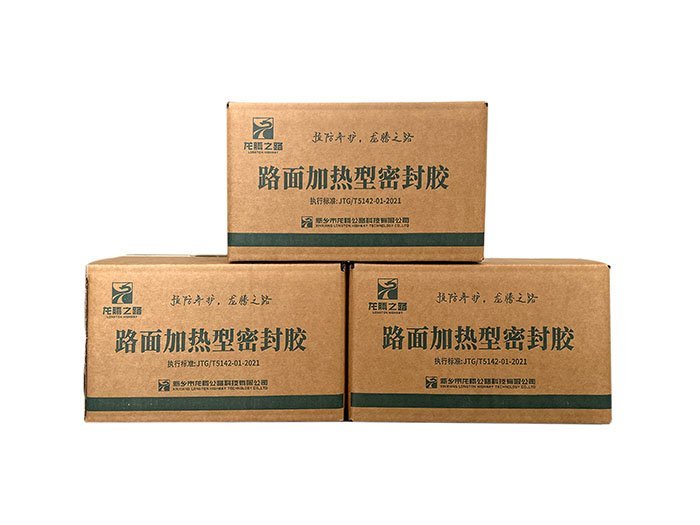Rubber asphalt sealant is a polymer pavement maintenance material specifically used for repairing pavement cracks. It is made by using modified asphalt as the base material, adding rubber powder, SBS, and various performance improvement additives, and is dissolved through a special process. At room temperature, it is in a solid state and will melt into a liquid state when heated to 80-120 ℃.
1. Introduction to Rubber Asphalt Grouting Adhesive Products
Type I, Type II, and Type III rubber asphalt sealant are hot melt pavement sealant materials made by our company using high-quality petroleum asphalt as the carrier, various high molecular weight polymers to form rubber alloys, and composite them under specific process conditions. Rubber asphalt sealant is used to repair road cracks, with good adhesion and strong resistance to embedding. This product meets the general technical requirements of "Non curing Rubber Asphalt Waterproof Coating" in the industrial and civil construction industry, and can be widely used in industrial and civil buildings, as well as road and bridge waterproof layer operations. The product performance meets the technical requirements of JT/T740-2015 "Road Heating Sealing Adhesive".
2. Characteristics of rubber asphalt sealant
(1) High elasticity and crack resistance: able to adapt to the expansion and contraction changes of the road surface, effectively resist the expansion of cracks caused by vehicle loads and temperature changes, and ensure the long-term stability of repaired cracks.
(2) Strong adhesion: It can tightly bond with the asphalt material on both sides of the crack, forming a strong protective layer to ensure long-lasting repair effect.
(3) Excellent sealing performance: It can effectively prevent moisture, air, and other debris from entering cracks, protect the road structure, and slow down the speed of road damage.
(4) Superior temperature resistance: does not melt or flow in high temperature environments, does not crack or detach in low temperature environments, and is suitable for various climatic conditions.
(5) Strong anti-aging performance: after special process treatment, it can keep the performance stable for a long time and is not easy to deteriorate.
(6) Environmental protection and safety: Raw materials are sourced from renewable resources, and harmful substances are not produced during use, in line with environmental protection principles.
3. Application scope of rubber asphalt sealant
Rubber asphalt sealant is widely used in crack repair of various roads and occasions, such as parking lots, highways, municipal roads, square floors, industrial park roads, and port terminals. include:
(1) Asphalt pavement: used to repair cracks in asphalt pavement.
(2) Cement concrete pavement: used to repair cracks in cement concrete pavement.
(3) Bridge expansion joint: used to treat cracks in bridge expansion joints.
(4) Tunnel: Used for crack treatment of tunnel structures.
(5) Airport runway: used to repair cracks in airport runways.
4. Construction steps
(1) Construction preparation: Clean the asphalt pavement in the construction area to ensure that there are no weeds, mud, or other debris. Check the condition of the road surface and determine the location and size of cracks that need to be repaired.
(2) Crack slotting: Use a professional slotting machine to slot along the road crack according to the designed slot size, maintaining the uniformity and straightness of the slot.
(3) Crack cleaning: Use a high-pressure air gun or similar equipment to clean the dust and debris inside and on both sides of the groove, ensuring that the groove is clean and free of debris.
(4) Grouting and compaction: evenly pour the heated grouting adhesive into the cleaned groove, and use professional compaction tools to compact the adhesive to ensure a tight bond between the adhesive and the groove wall.
(5) Maintenance and testing: Regularly inspect the joint filling area to ensure that its flatness and bonding strength meet the requirements. Before opening up traffic, it should be ensured that the sealant has sufficient cooling time.



